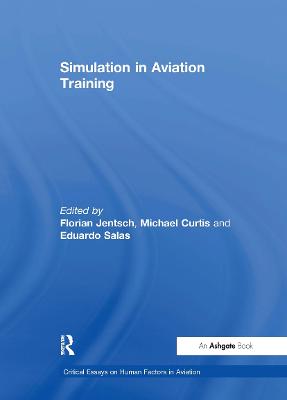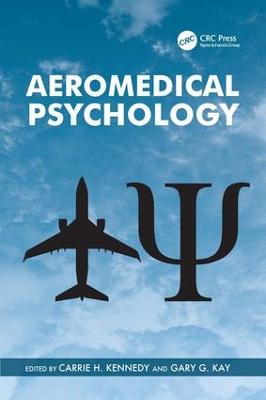Simulation in Aviation Training
 -15%
portes grátis
-15%
portes grátis
Simulation in Aviation Training
Curtis, Michael; Jentsch, Florian
Taylor & Francis Ltd
03/2011
540
Dura
Inglês
9780754628873
15 a 20 dias
1224
Descrição não disponível.
Contents: Introduction; Part I Using Simulation for Training: Aircraft simulation and pilot training, Paul W. Caro; Adopting the instructional science paradigm to encompass in virtual environments, D. Dorsey, G. Campbell and S. Russell; It's not how much you have but how you use it: toward a rational use of simulation to support aviation training, Eduardo Salas, Clint A. Bowers and Lori Rhodenizer; Rapidly reconfigurable event-set based line operational evaluation scenarios, Clint Bowers, Florian Jentsch, David Baker, Carolyn Prince and Eduardo Salas; Simulation design for training and assessment, Stephen Alessi. Part II Simulation Fidelity: Quality criteria for simulator images: a literature review, Pieter Padmos and Maarten V. Milders; Transfer of skill from a computer game trainer to flight, Daniel Gopher, Maya Weil and Tal Bareket; Evidence for the validity of PC-based simulations in studying aircrew coordination, Florian Jentsch and Clint A. Bowers; Fidelity and validity of simulator training, N. Dahlstrom, S. Dekker, R. van Winsen and J. Nyce. Part III Physiological Responses and Simulation Sickness: A literature survey for virtual environments: military flight simulator visual systems and simulator sickness, Randy Pausch, Thomas Crea and Matthew Conway; Simulator sickness is polygenic and polysymptomatic: implications for research, Robert S. Kennedy and Jennifer E. Fowlkes; Simulator platform motion: the need revisited, Judith BA1/4rki-Cohen, Nancy N. Soja and Thomas Longridge. Part IV Simulation as Training and Method: Training high-performance skills: fallacies and guidelines, Walter Schneider; Part-task training for tracking and manual control, Dennis C. Wightman and Gavan Lintern; Transfer of landing skills in beginning flight training, Gavan Lintern, Stanley N. Roscoe, Jefferson M. Koonce and Leon D. Segal; Individual and team decision making under stress: theoretical underpinnings, Janice A. Cannon-Bowers and Eduardo Salas; Evaluating the effectiveness of flight simulators for training combat skills: a review, Herbert H. Bell and Wayne L. Waag. Part V Training Evaluation Using Simulation: Training effectiveness evaluation, R.T. Hays and M.J. Singer; The reliability of instructor evaluations of crew performance: good news and not so good news, Michael T. Brannick, Carolyn Prince and Eduardo Salas; Continuous concurrent feedback degrades skill learning: implications for training and simulation, Richard A. Schmidt and Gabriele Wulf; Performance measurement in simulation-based training: a review and best practice, Eduardo Salas, Michael A. Rosen, Janet D. Held and Johnny J. Weissmuller. Part VI Simulation Beyond Aviation: The use of simulation for training teamwork skills in health care: how low can you go?, J.M. Beaubien and D.P. Baker; The complexity of team training: what we have learned from aviation and its application to medicine, W.R. Hamman; Constructs of simulation evaluation, Andrew Hale Feinstein and Hugh M. Cannon; Games, motivation and learning: a research and practice model, Rosemary Garris, Robert Ahlers and James E. Driskell; Name index.
Este título pertence ao(s) assunto(s) indicados(s). Para ver outros títulos clique no assunto desejado.
Federal Aviation Administration;Shared Mental Model;flight;Feedback Augmentation;simulators;VOR;cockpit;Transfer Effectiveness Ratio;resource;Simulator Sickness;management;SBT.;simulator;CRM Training;sickness;CRM;high;Lower Fidelity Simulation;fidelity;Part-task Training;low;High Fidelity Simulation;modern flight simulation;Flight Simulators;simulator fidelity;Full Mission Simulations;simulation training development;Part Task Trainer;simulated flight training;Simulation Based Training;Event Set;Perceived Fidelity;Motion Sickness;Approach Path;Advanced Qualification Program;ConFB;Flight Training Simulators;Refresh Rate;Aircrew Coordination
Contents: Introduction; Part I Using Simulation for Training: Aircraft simulation and pilot training, Paul W. Caro; Adopting the instructional science paradigm to encompass in virtual environments, D. Dorsey, G. Campbell and S. Russell; It's not how much you have but how you use it: toward a rational use of simulation to support aviation training, Eduardo Salas, Clint A. Bowers and Lori Rhodenizer; Rapidly reconfigurable event-set based line operational evaluation scenarios, Clint Bowers, Florian Jentsch, David Baker, Carolyn Prince and Eduardo Salas; Simulation design for training and assessment, Stephen Alessi. Part II Simulation Fidelity: Quality criteria for simulator images: a literature review, Pieter Padmos and Maarten V. Milders; Transfer of skill from a computer game trainer to flight, Daniel Gopher, Maya Weil and Tal Bareket; Evidence for the validity of PC-based simulations in studying aircrew coordination, Florian Jentsch and Clint A. Bowers; Fidelity and validity of simulator training, N. Dahlstrom, S. Dekker, R. van Winsen and J. Nyce. Part III Physiological Responses and Simulation Sickness: A literature survey for virtual environments: military flight simulator visual systems and simulator sickness, Randy Pausch, Thomas Crea and Matthew Conway; Simulator sickness is polygenic and polysymptomatic: implications for research, Robert S. Kennedy and Jennifer E. Fowlkes; Simulator platform motion: the need revisited, Judith BA1/4rki-Cohen, Nancy N. Soja and Thomas Longridge. Part IV Simulation as Training and Method: Training high-performance skills: fallacies and guidelines, Walter Schneider; Part-task training for tracking and manual control, Dennis C. Wightman and Gavan Lintern; Transfer of landing skills in beginning flight training, Gavan Lintern, Stanley N. Roscoe, Jefferson M. Koonce and Leon D. Segal; Individual and team decision making under stress: theoretical underpinnings, Janice A. Cannon-Bowers and Eduardo Salas; Evaluating the effectiveness of flight simulators for training combat skills: a review, Herbert H. Bell and Wayne L. Waag. Part V Training Evaluation Using Simulation: Training effectiveness evaluation, R.T. Hays and M.J. Singer; The reliability of instructor evaluations of crew performance: good news and not so good news, Michael T. Brannick, Carolyn Prince and Eduardo Salas; Continuous concurrent feedback degrades skill learning: implications for training and simulation, Richard A. Schmidt and Gabriele Wulf; Performance measurement in simulation-based training: a review and best practice, Eduardo Salas, Michael A. Rosen, Janet D. Held and Johnny J. Weissmuller. Part VI Simulation Beyond Aviation: The use of simulation for training teamwork skills in health care: how low can you go?, J.M. Beaubien and D.P. Baker; The complexity of team training: what we have learned from aviation and its application to medicine, W.R. Hamman; Constructs of simulation evaluation, Andrew Hale Feinstein and Hugh M. Cannon; Games, motivation and learning: a research and practice model, Rosemary Garris, Robert Ahlers and James E. Driskell; Name index.
Este título pertence ao(s) assunto(s) indicados(s). Para ver outros títulos clique no assunto desejado.
Federal Aviation Administration;Shared Mental Model;flight;Feedback Augmentation;simulators;VOR;cockpit;Transfer Effectiveness Ratio;resource;Simulator Sickness;management;SBT.;simulator;CRM Training;sickness;CRM;high;Lower Fidelity Simulation;fidelity;Part-task Training;low;High Fidelity Simulation;modern flight simulation;Flight Simulators;simulator fidelity;Full Mission Simulations;simulation training development;Part Task Trainer;simulated flight training;Simulation Based Training;Event Set;Perceived Fidelity;Motion Sickness;Approach Path;Advanced Qualification Program;ConFB;Flight Training Simulators;Refresh Rate;Aircrew Coordination




